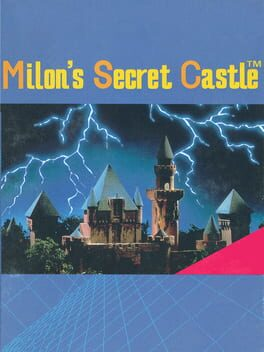Trivia Browser
Platform: Super Nintendo Entertainment System
subdirectory_arrow_right Sega Mega Drive/Genesis (Platform)
▲
2
▼
"Blast processing" is a marketing term coined by Sega of America to promote the Sega Genesis as the cooler and more powerful console compared to the Super Nintendo Entertainment System. It was such an effective campaign that it caused Nintendo to spend millions of dollars to ramp up their own smear campaign to rebut the claims, helping to create the textbook example of a "console war" between two rivaling video game companies through aggressive marketing and advertising. It is true that Blast processing as presented in advertisements at the time does not exist in any released Genesis game, but its creation was based on a real, low-level progressive processing method that ultimately went unused by developers.
The basic idea is that the hardware's video processor is "blasted" continuously, with the Genesis' 68000 processor working flat-out to change the color of every individual pixel during an active scan, a process where the "guns" on a CRT screen move from left to right and then down to the next line and so on. It was believed at the time that this function could be used to increase the Genesis' somewhat constrained color palette to showcase 256 color static images if timed right (this number would be exceeded by other developers like Jon Burton from Traveller's Tales who later discovered the trick).
Sega of America Senior Producer Scott Bayless claimed that Sega technical director Marty Franz first discovered the trick by "hooking the scan line interrupt and firing off a DMA [direct memory access] at just the right time", as firing it off at the wrong time would result in the scan lines appearing out of phase. This timing/synchronization issue, on top of the more pressing issue of the feature using all of the 68000's CPU time (meaning that while you could run the feature, you couldn't actually play the games that use it), effectively made it useless for cartridge games, and no shipped Genesis games ever used the feature. It’s speculated that it could have been used for Sega CD games, as the add-on had its own CPU that could run the feature, but this also did not come to pass.
The people responsible for the name "Blast processing" are Bayless and Sega of America's PR team. They interviewed him about the specs of the console, and he described to them how the feature could "blast data into the DAC's [digital-to-audio converters]". When talking about how the name came about, he assumed the PR team just liked the word "blast" without understanding what Bayless was explaining, and Blast processing was invented by them to more easily and vaguely sum up the technical capabilities of the Genesis when marketing it. Bayless later expressed reservations about the phrase, calling it "ghastly".
It should also be noted that this feature was not exclusive to the Genesis. In 2020, former Sculptured Software programmer Jeff Peters claimed that they discovered a similar technical trick on the SNES before Sega started using the phrase, but it was focused on audio rather than graphics. He claims that when porting Mortal Kombat to the SNES, Sculptured Software encountered an issue where the amount of graphics data being put onto the cartridge meant that sound had to be cut back drastically. To overcome this problem, Peters and his team used a homegrown system which allowed them to read sounds from the cartridge one at a time and blast them directly to a buffer in the sound memory. While the two tricks were achieving different things, it's interesting to note that both were possible on either console, despite Sega's insistence that only the Genesis could achieve Blast processing.
The basic idea is that the hardware's video processor is "blasted" continuously, with the Genesis' 68000 processor working flat-out to change the color of every individual pixel during an active scan, a process where the "guns" on a CRT screen move from left to right and then down to the next line and so on. It was believed at the time that this function could be used to increase the Genesis' somewhat constrained color palette to showcase 256 color static images if timed right (this number would be exceeded by other developers like Jon Burton from Traveller's Tales who later discovered the trick).
Sega of America Senior Producer Scott Bayless claimed that Sega technical director Marty Franz first discovered the trick by "hooking the scan line interrupt and firing off a DMA [direct memory access] at just the right time", as firing it off at the wrong time would result in the scan lines appearing out of phase. This timing/synchronization issue, on top of the more pressing issue of the feature using all of the 68000's CPU time (meaning that while you could run the feature, you couldn't actually play the games that use it), effectively made it useless for cartridge games, and no shipped Genesis games ever used the feature. It’s speculated that it could have been used for Sega CD games, as the add-on had its own CPU that could run the feature, but this also did not come to pass.
The people responsible for the name "Blast processing" are Bayless and Sega of America's PR team. They interviewed him about the specs of the console, and he described to them how the feature could "blast data into the DAC's [digital-to-audio converters]". When talking about how the name came about, he assumed the PR team just liked the word "blast" without understanding what Bayless was explaining, and Blast processing was invented by them to more easily and vaguely sum up the technical capabilities of the Genesis when marketing it. Bayless later expressed reservations about the phrase, calling it "ghastly".
It should also be noted that this feature was not exclusive to the Genesis. In 2020, former Sculptured Software programmer Jeff Peters claimed that they discovered a similar technical trick on the SNES before Sega started using the phrase, but it was focused on audio rather than graphics. He claims that when porting Mortal Kombat to the SNES, Sculptured Software encountered an issue where the amount of graphics data being put onto the cartridge meant that sound had to be cut back drastically. To overcome this problem, Peters and his team used a homegrown system which allowed them to read sounds from the cartridge one at a time and blast them directly to a buffer in the sound memory. While the two tricks were achieving different things, it's interesting to note that both were possible on either console, despite Sega's insistence that only the Genesis could achieve Blast processing.
Eurogamer article:
https://www.eurogamer.net/digitalfoundry-2019-blast-processing-retro-analysis
Jon Burton video:
https://www.youtube.com/watch?v=o8qgArSqMsc
Scott Bayless interview:
https://www.timeextension.com/news/2022/09/the-man-behind-segas-blast-processing-gimmick-is-sorry-for-creating-that-ghastly-phrase
Jeff Peters claims:
https://www.nintendolife.com/news/2020/05/segas_blast_processing_we_did_it_on_the_snes_first_says_former_sculptured_software_dev
https://www.eurogamer.net/digitalfoundry-2019-blast-processing-retro-analysis
Jon Burton video:
https://www.youtube.com/watch?v=o8qgArSqMsc
Scott Bayless interview:
https://www.timeextension.com/news/2022/09/the-man-behind-segas-blast-processing-gimmick-is-sorry-for-creating-that-ghastly-phrase
Jeff Peters claims:
https://www.nintendolife.com/news/2020/05/segas_blast_processing_we_did_it_on_the_snes_first_says_former_sculptured_software_dev
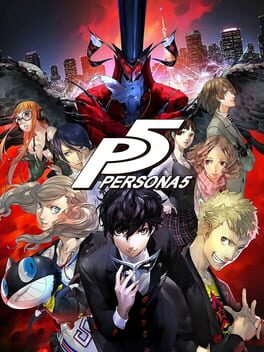
▲
1
▼
Fans believe Suguru Kamoshida is based off of former judo gold medalist Masato Uchishiba who spent 5 years in prison for rape and had all his medals and honors revoked.
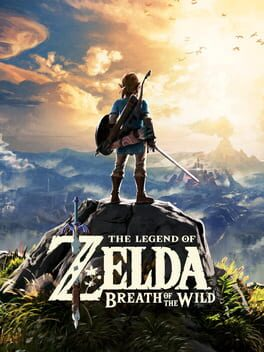
▲
1
▼
If you listen closely to the music being played in the Divine Beasts, you can make out Morse code for "S.O.S." This is very likely a distress call the Champions made when they were attacked by the Ganon Blights 100 years prior to the start of the game.
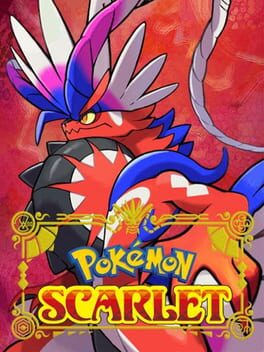
subdirectory_arrow_right Pokémon Violet (Game)
▲
1
▼
Although the Paldea region is based on Iberia, its starters may take inspiration from the modern culture and fauna of New World places that Spain and Portugal colonized and influenced. Specifically:
•The Skeledirge line may represent Mexico. Its name, secondary ghost-typing, and skeletal imagery evokes Mexico's Día de Los Muertos (Day of the Dead), a celebration of the former lives of deceased loved ones where, among other things, celebrators may dress in flamboyantly colored costumes and paint skulls on their faces. Crocalor also has a head growth resembling a Sombrero. This and the line's theme of singing to attack may also be a reference to Mariachi folk music. In a fauna sense, Crocodiles are also endemic to Mexico.
•Quaquaval's influence may derive from Brazil's culture. This can be seen in the name which has elements of Carnival, a Catholic festive season popularly celebrated in Brazil with lavish parades. In addition, it being part fighting-type and being dance-themed may be based on the Brazilian martial art of Capoeira, a fighting style that heavily resembles dancing in many of its moves. Quaquaval is also based upon the South American Crested Duck.
•Meowscarada, while possibly taking inspiration from Iberia itself with its resemblance to the Iberian Lynx, could also take cues from the Southern United States, specifically the State of Louisiana. This is because New Orleans, in Louisiana, is known for its Mardi Gras (Fat Tuesday) celebrations as part of Carnival, which iconically feature performers in elaborate masks, hence Meowscarada's name evoking the word Mascarade. Although Louisiana was influenced by France, it was also conquered by Spain later, along with a lot of the Southern U.S. It may also be based on Louisiana's prominent diasporic religion surrounding Voodoo. Meowscarada's species may furthermore be based off of the Bobcat/Red Lynx, a relative of the Iberian Lynx.
•The Skeledirge line may represent Mexico. Its name, secondary ghost-typing, and skeletal imagery evokes Mexico's Día de Los Muertos (Day of the Dead), a celebration of the former lives of deceased loved ones where, among other things, celebrators may dress in flamboyantly colored costumes and paint skulls on their faces. Crocalor also has a head growth resembling a Sombrero. This and the line's theme of singing to attack may also be a reference to Mariachi folk music. In a fauna sense, Crocodiles are also endemic to Mexico.
•Quaquaval's influence may derive from Brazil's culture. This can be seen in the name which has elements of Carnival, a Catholic festive season popularly celebrated in Brazil with lavish parades. In addition, it being part fighting-type and being dance-themed may be based on the Brazilian martial art of Capoeira, a fighting style that heavily resembles dancing in many of its moves. Quaquaval is also based upon the South American Crested Duck.
•Meowscarada, while possibly taking inspiration from Iberia itself with its resemblance to the Iberian Lynx, could also take cues from the Southern United States, specifically the State of Louisiana. This is because New Orleans, in Louisiana, is known for its Mardi Gras (Fat Tuesday) celebrations as part of Carnival, which iconically feature performers in elaborate masks, hence Meowscarada's name evoking the word Mascarade. Although Louisiana was influenced by France, it was also conquered by Spain later, along with a lot of the Southern U.S. It may also be based on Louisiana's prominent diasporic religion surrounding Voodoo. Meowscarada's species may furthermore be based off of the Bobcat/Red Lynx, a relative of the Iberian Lynx.

subdirectory_arrow_right Pokémon Violet (Game)
▲
1
▼
Tandemaus and Maushold may have dark origins as they may be based on the concept of a "Rat King", where several rats' tails are tied together or tangled by a person (although there have been reported cases of this happening without human interference). Explaining the German-sounding name of the Pokémon, the Rat King concept is named after the German term "Rattenkonig" which, in turn, is based on the villain of the same name from the short story "The Nutcracker and the Mouse King" who is sometimes depicted as being comprised of several mice or rats.
Also the Pokémon themselves may be aesthetically based on toy-like dioramic objects called "Sylvian Families" in Japan (or "Calico Critters" in English countries) which are essentially dressed-up mouse dolls in different whimsical small settings that make the mice look more like a human family. These Sylvian Families started in Japan in the 1980s, which is when many of the veteran developers at Game Freak would have grown up.
Also the Pokémon themselves may be aesthetically based on toy-like dioramic objects called "Sylvian Families" in Japan (or "Calico Critters" in English countries) which are essentially dressed-up mouse dolls in different whimsical small settings that make the mice look more like a human family. These Sylvian Families started in Japan in the 1980s, which is when many of the veteran developers at Game Freak would have grown up.
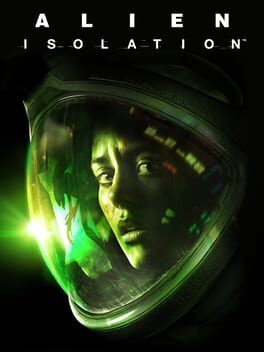
▲
1
▼
There are a few references to the original movie.
1. Scattered around the Torrens and Sevastopol station are drinking birds. The first one found is in the hypersleep chamber.
2. During Mission 2 in the baggage claim area, players can hear the faint sound of meowing before it abruptly stops as they approach the primary airlock. This is a possible reference to the cat Jonesy from the first movie.
3. Another reference is found when players discover the deceased Alistair Smythe who has a rolled-up magazine shoved down his throat. Spoiler:This is how Ash tried to kill Ellen Ripley.
1. Scattered around the Torrens and Sevastopol station are drinking birds. The first one found is in the hypersleep chamber.
2. During Mission 2 in the baggage claim area, players can hear the faint sound of meowing before it abruptly stops as they approach the primary airlock. This is a possible reference to the cat Jonesy from the first movie.
3. Another reference is found when players discover the deceased Alistair Smythe who has a rolled-up magazine shoved down his throat. Spoiler:This is how Ash tried to kill Ellen Ripley.
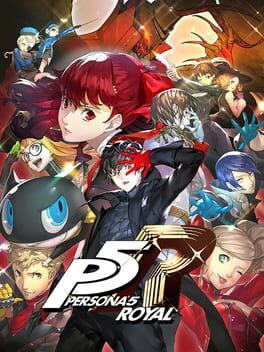
▲
1
▼
Shujin's psychiatrist Dr. Takuto Maruki is introduced during the month of May and is always offering snacks to anyone that visits him. The protagonist can even obtain some healing items when he visits him during certain ranks. This is probably due to Spoiler:how he visited Rumi in the hospital empty-handed after her traumatic experience where a burglar broke into her home and murdered her parents. Maruki then tries to have snacks on hand to give to students in an effort to remember her.
Franchise: Pokémon
▲
1
▼
In Pokémon Scarlet & Violet, Roaring Moon's Violet Dex entry as well as the occult magazine's description of the Paradox Pokémon both imply that there is a deep connection between Roaring Moon and Mega Salamance. Considering that Roaring Moon, like all past Paradox Pokémon, is a prehistoric version of an existing Pokémon, in this case Salamance, this could mean that there is also a connection between Mega Evolution and Pokémon prehistory.
Franchise: Pokémon
▲
1
▼
Foongus' Pokemon Scarlet PokéDex entry states that there is an in-universe theory that the "creator of the modern day Poké Ball" was inspired by the Pokémon's appearance when designing the device.

subdirectory_arrow_right Pokémon Violet (Game)
▲
1
▼
Primeape's new Ghost-Type evolution, Annihilape, obtained by Primeape using the move Rage Fist 20 times, is a possible reference to Primeape's previous PokéDex entry about how it could suddenly die if it gets way too angry.

subdirectory_arrow_right Pokémon Violet (Game)
▲
1
▼
 The headpiece worn by a Pokémon when they Terastalize into a Ghost-Type greatly resembles the Sprite used in the Gen 1 games for ghost Pokémon in the Pokémon Tower of Lavender Town that can be seen when the player goes there for the first time without the Silph Scope. It's also notable for being a sprite used by the Gen 1 glitch Pokémon MissingNo.
The headpiece worn by a Pokémon when they Terastalize into a Ghost-Type greatly resembles the Sprite used in the Gen 1 games for ghost Pokémon in the Pokémon Tower of Lavender Town that can be seen when the player goes there for the first time without the Silph Scope. It's also notable for being a sprite used by the Gen 1 glitch Pokémon MissingNo.
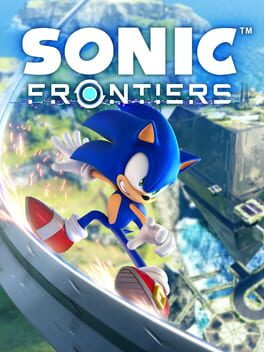
▲
1
▼
 In rare instances throughout the game, characters that didn't appear in Sonic Frontiers are referenced in passing, such as Cream, Shadow, Rouge, Blaze, Jet, Omega, Yacker the Wisp, and Zavok of the Deadly Six. However two of these voice lines reference Sticks the Badger and Tangle the Lemur, two characters who have not appeared in the mainline game series at all. While Sticks previously had a character page among other mainline characters on the Japanese Sonic Channel website, she has so far only appeared in the spin-off series Sonic Boom, while Tangle has so far only appeared in IDW Publishing's Sonic the Hedgehog comic book series. Thus Sonic's name drop of them in this mainline title essentially establishes the characters as canon to the Sonic game series. This Easter egg came about due to the fact that Sonic Frontiers' writer Ian Flynn is also a co-writer of the IDW comic series, and Flynn later confirmed that he added Sticks' name to the game's script both as a way to introduce her into the mainline Sonic canon, and to test the boundaries of what Sega would let him include in the game. However, he also added that he couldn't promise future appearances of her in mainline games. Flynn had originally planned for Sticks to make her canon debut in the IDW comics: the ending of the "Battle for Angel Island" arc would have revealed that she had been living on the island. This was declined by Sega. As for Tangle, while not directly related to her appearance in Frontiers, Flynn has stated that Sega fully owns the IDW characters, thus making it possible to use them in games.
In rare instances throughout the game, characters that didn't appear in Sonic Frontiers are referenced in passing, such as Cream, Shadow, Rouge, Blaze, Jet, Omega, Yacker the Wisp, and Zavok of the Deadly Six. However two of these voice lines reference Sticks the Badger and Tangle the Lemur, two characters who have not appeared in the mainline game series at all. While Sticks previously had a character page among other mainline characters on the Japanese Sonic Channel website, she has so far only appeared in the spin-off series Sonic Boom, while Tangle has so far only appeared in IDW Publishing's Sonic the Hedgehog comic book series. Thus Sonic's name drop of them in this mainline title essentially establishes the characters as canon to the Sonic game series. This Easter egg came about due to the fact that Sonic Frontiers' writer Ian Flynn is also a co-writer of the IDW comic series, and Flynn later confirmed that he added Sticks' name to the game's script both as a way to introduce her into the mainline Sonic canon, and to test the boundaries of what Sega would let him include in the game. However, he also added that he couldn't promise future appearances of her in mainline games. Flynn had originally planned for Sticks to make her canon debut in the IDW comics: the ending of the "Battle for Angel Island" arc would have revealed that she had been living on the island. This was declined by Sega. As for Tangle, while not directly related to her appearance in Frontiers, Flynn has stated that Sega fully owns the IDW characters, thus making it possible to use them in games.
Article on character references:
https://www.thegamer.com/sonic-frontiers-jet-tangle-cream-blaze-sticks-references/
Sonic Frontiers - Sticks the Badger reference:
https://www.youtube.com/watch?v=xehEP9CKMQk?t=25
Sonic Frontiers - Tangle the Lemur reference:
https://www.youtube.com/watch?v=QQJv3CddjJE?t=9
Bumblekast - April 30, 2022
https://www.youtube.com/watch?v=RSPwaUS_7IE&t=3105
Bumblekast - July 6, 2022:
https://www.youtube.com/watch?v=wLZ2y0mwbqc#t=1305
Bumblekast - December 31, 2022:
https://www.youtube.com/watch?v=LefotqRPlzU&t=3535s
https://www.thegamer.com/sonic-frontiers-jet-tangle-cream-blaze-sticks-references/
Sonic Frontiers - Sticks the Badger reference:
https://www.youtube.com/watch?v=xehEP9CKMQk?t=25
Sonic Frontiers - Tangle the Lemur reference:
https://www.youtube.com/watch?v=QQJv3CddjJE?t=9
Bumblekast - April 30, 2022
https://www.youtube.com/watch?v=RSPwaUS_7IE&t=3105
Bumblekast - July 6, 2022:
https://www.youtube.com/watch?v=wLZ2y0mwbqc#t=1305
Bumblekast - December 31, 2022:
https://www.youtube.com/watch?v=LefotqRPlzU&t=3535s

▲
1
▼
Some of the Cyberspace levels have layouts and elements taken almost directly from previous Sonic games, even if the aesthetics of the Cyberspace levels don't match the legacy ones at all sometimes. They are as follows:
Zone 1-1: Windmill Isle Act 1 from Sonic Unleashed
Zone 1-2: Windmill Isle Act 2 from Sonic Unleashed
Zone 1-4: Green Hill Act 2 from Sonic Generations
Zone 1-5: Chemical Plant Act 2 from Sonic Generations
Zone 1-6: Green Hill Act 1 from Sonic Generations
Zone 1-7: City Escape from Sonic Adventure 2
Zone 2-1: Green Hill Act 2 from Sonic Generations (2D sections)
Zone 2-2: Dragon Road Act 3 from Sonic Unleashed
Zone 2-4: Shadow's Radical Highway level from Sonic Adventure 2
Zone 2-5: Sky Sanctuary Act 2 from Sonic Generations (2D sections)
Zone 2-6: Shadow's Sky Rail level from Sonic Adventure 2
Zone 2-7: Sky Sanctuary Act 1 from Sonic Generations
Zone 3-1: Green Forest from Sonic Adventure 2
Zone 3-2: Savanna Citadel Act 1 from Sonic Unleashed
Zone 3-3: Sky Sanctuary Act 2 from Sonic Generations (3D sections)
Zone 3-6: Rooftop Run Act 2 from Sonic Unleashed
Zone 3-7: Chemical Plant Act 2 from Sonic Generations (2D sections)
Zone 4-1: Metal Harbor from Sonic Adventure 2
Zone 4-6: Chemical Plant Act 1 from Sonic Generations
Zone 1-1: Windmill Isle Act 1 from Sonic Unleashed
Zone 1-2: Windmill Isle Act 2 from Sonic Unleashed
Zone 1-4: Green Hill Act 2 from Sonic Generations
Zone 1-5: Chemical Plant Act 2 from Sonic Generations
Zone 1-6: Green Hill Act 1 from Sonic Generations
Zone 1-7: City Escape from Sonic Adventure 2
Zone 2-1: Green Hill Act 2 from Sonic Generations (2D sections)
Zone 2-2: Dragon Road Act 3 from Sonic Unleashed
Zone 2-4: Shadow's Radical Highway level from Sonic Adventure 2
Zone 2-5: Sky Sanctuary Act 2 from Sonic Generations (2D sections)
Zone 2-6: Shadow's Sky Rail level from Sonic Adventure 2
Zone 2-7: Sky Sanctuary Act 1 from Sonic Generations
Zone 3-1: Green Forest from Sonic Adventure 2
Zone 3-2: Savanna Citadel Act 1 from Sonic Unleashed
Zone 3-3: Sky Sanctuary Act 2 from Sonic Generations (3D sections)
Zone 3-6: Rooftop Run Act 2 from Sonic Unleashed
Zone 3-7: Chemical Plant Act 2 from Sonic Generations (2D sections)
Zone 4-1: Metal Harbor from Sonic Adventure 2
Zone 4-6: Chemical Plant Act 1 from Sonic Generations
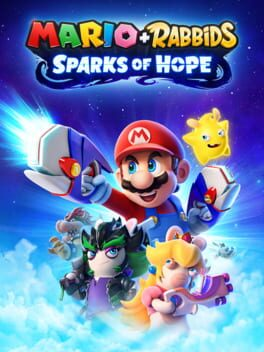
▲
1
▼
The game's title theme sounds similar to the Space Junk Galaxy theme from Super Mario Galaxy.

▲
1
▼
Part of Grape Garden's background music greatly resembles the song "Silver and Gold", sung by Burl Ives, from the animated holiday musical film "Rudolph the Red-Nosed Reindeer".

▲
1
▼
The music for Frosty Village seems to be a faster-paced, copyright-law-friendly version of the popular Christmas song "Winter Wonderland".
Part of the Walrus Cove theme also resembles Gene Autry's "Here Comes Santa Claus" in the same regard as well.
Part of the Walrus Cove theme also resembles Gene Autry's "Here Comes Santa Claus" in the same regard as well.
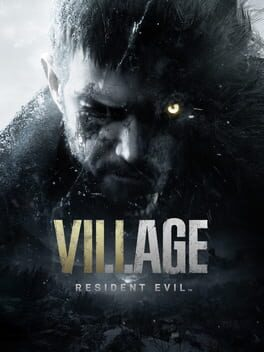
▲
1
▼
The design for Castle Dimitrescu was likely influenced by Peles Castle, which is found in Transylvania, Romania.
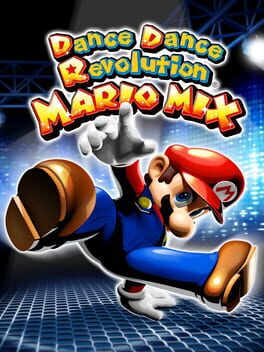
▲
1
▼
During the end credits level, Mario/Luigi will appear in the background doing a dance that involves swinging his arms from side to side and taking a step in the direction of each swing. This could be a reference to "Do the Mario", the end credits theme to the 1989 animated series "The Super Mario Bros. Super Show!" during which the dance is performed by Mario, portrayed by professional wrestler Lou Albano.


